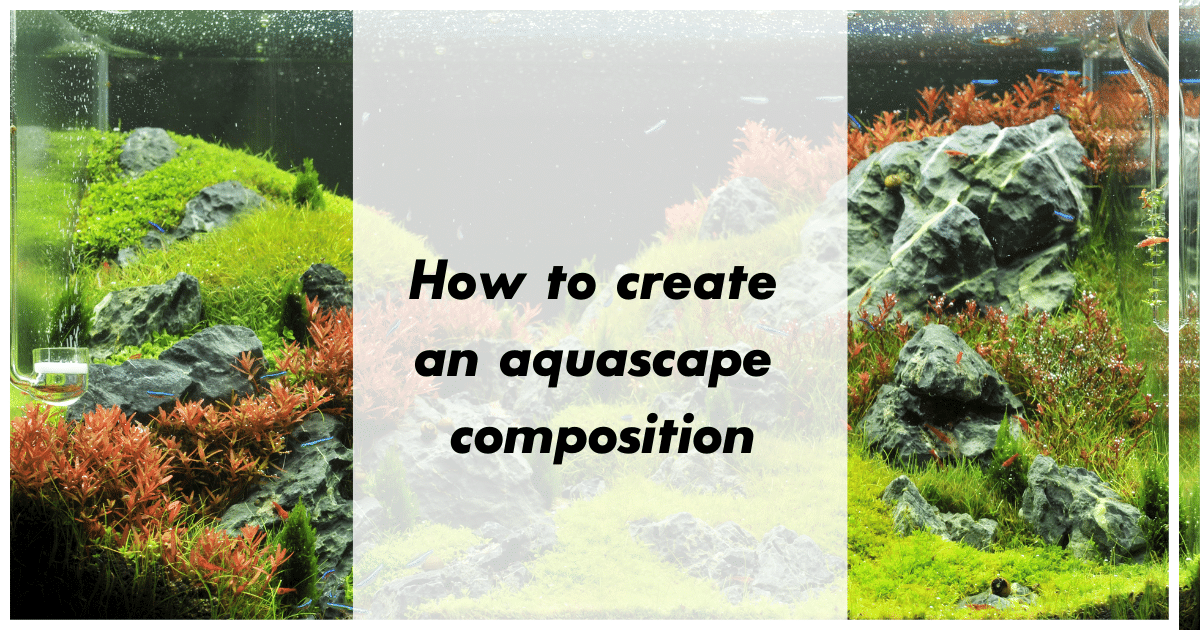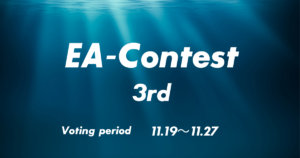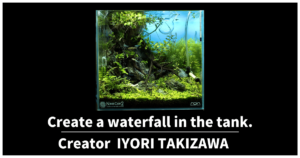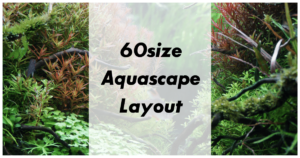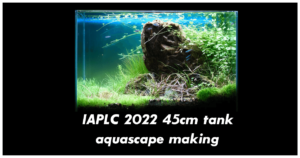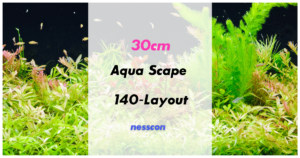If you remember the composition of an aquascape, you can set up a great aquascape layout. There are three patterns in total.
You can improve your sense of aquascape design by following the three patterns in your layout.
This article will introduce how to create the composition. If you are a beginner in aquascape, please read this article for reference.
What is the layout composition of an aquascape?

There are three patterns.
The “triangular,” “convex,” and “concave” shapes are typical for aquarium tanks. By keeping the basics in mind, even beginners can create a great aquascape layout.
Hide equipment to match the aquascape layout composition
The location for hiding equipment will vary depending on the composition of each layout. Ideally, the heater and submersible filter should be hidden behind large pieces of driftwood, rocks, or aquatic plants (although some equipment wiring may prevent this). (Some of the equipment may not be concealed by wiring, however.)
Flow of starting up an aquascape
- Lay down the soil
- Compose and place materials
- Planting water plants
- Wrap the plants around driftwood and stones
- Pouring water
Triangle Layout
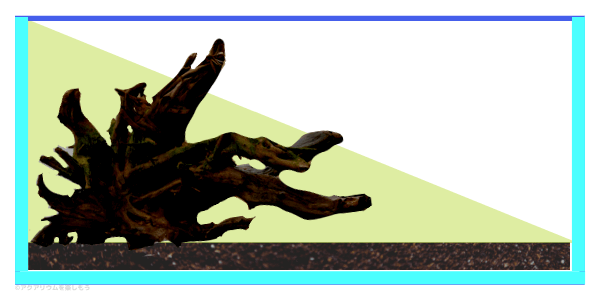
A triangular layout is a pattern in which driftwood or stones are placed on either side of the tank. As illustrated in the diagram, taller plants are generally planted on the left side (around the driftwood).
At this point, if you plant plants in the middle or back ground in the swimming space on the right side, the balance will be very bad. If possible, the space on the right should be used only for the fish swimming space, and only foreground plants and decorative sand should be planted.
A triangular layout is the same as an inverted layout. Therefore, the layout should be configured on either the left or right side, depending on the shape of the driftwood and stones. Layout placement may be limited depending on the size of the aquarium and the filtration filter you plan to install.
Points to note for small aquariums
When building a layout in a small aquarium, be careful about the size of driftwood and stones. Depending on the shape, it may be difficult to create depth when larger materials are added. It is safe to use large materials only in areas you want to emphasize.
Layout notes for large tanks and larger
At 20 gallons or larger, you can place driftwood and other materials that are reasonably large. There is no problem in using large materials, but it is not a good idea to use mainly small materials. This is because when the aquatic plants grow, the driftwood and stones will be hidden and you will end up with an aquatic plant-only layout. Keep in mind to use larger materials for a large aquarium layout.


Both of the above layout compositions are triangular compositions. The layout material and aquatic plants are placed on one side, so it is easy for beginners to embody.
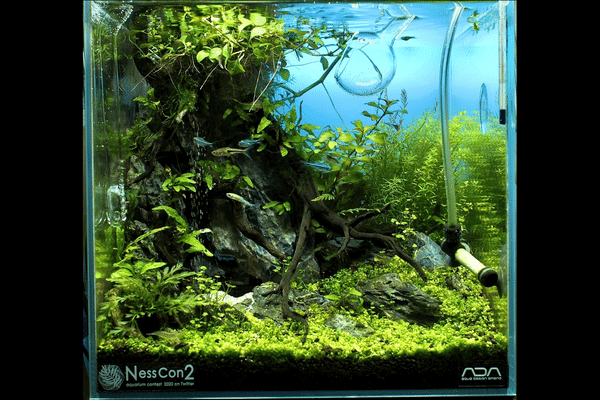
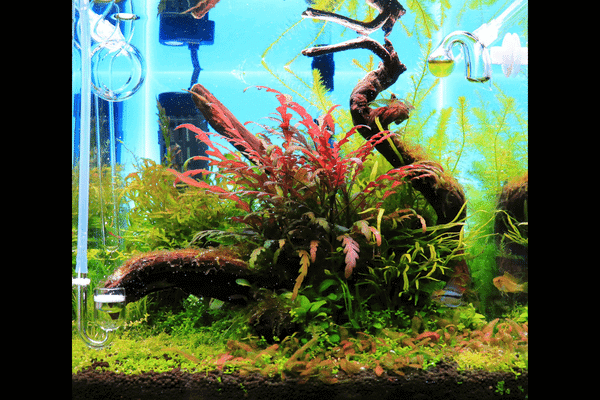
It seems that the difficulty of creating a triangular composition increases with a 7-gallon tank. However, by being conscious of the composition, it is easy to create space and create a cohesive layout.
Convex composition Layout
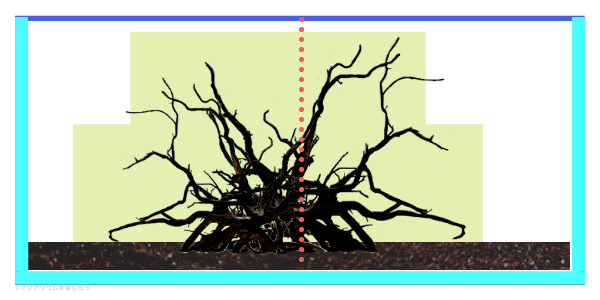
A convex configuration is a layout in which driftwood and stones are placed in the center. If the materials are too small, they will be hidden by the aquatic plants and it will be difficult to tell what the layout is about. The ideal layout is not to simply place them on the center line, but to shift them slightly to the left or right.
Water plants should be planted to emphasize the driftwood and stones in the center. You can plant tall water plants only in the center to synchronize with the driftwood, or you can plant them on the sides to emphasize the central material.
Soil should be spread thickly in the back.

If the soil is laid flat, the material will be buried when the water plants grow and the layout will look like just driftwood.
To avoid this, soil should be laid thicker in the back part of the soil to prevent it from being buried by foreground grass or other vegetation. Ideally, if the foreground is 3 cm to 5 cm thick, the rear should be laid at twice that size.
Points to note for small aquarium layouts
When constructing a convex layout in a small aquarium, it is necessary to pay attention to the height and width of the aquarium. If the tank is 26 cm (H) x 30 cm (W), you can build it while recognizing the space of the width, but if it is a cube tank with the same height and width, the layout will be unbalanced depending on the material size.
Layout notes for medium size tanks and larger
If the aquarium is more than 45 cm wide, driftwood of a certain size can be placed without difficulty. However, if you use mainly small materials, the driftwood will be hidden when the aquatic plants grow, resulting in an aquarium layout that is just overgrown with aquatic plants. For medium or larger aquarium layouts, it is advisable to use larger materials.
Example of convex composition layout

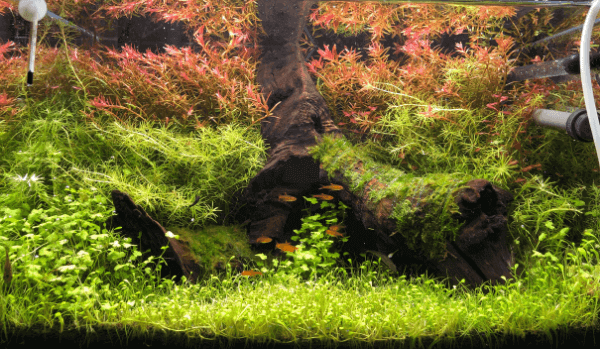
A convex composition layout is completed by placing the layout material in the center. Note that the composition may break down depending on the color scheme and volume of the aquatic plants.

